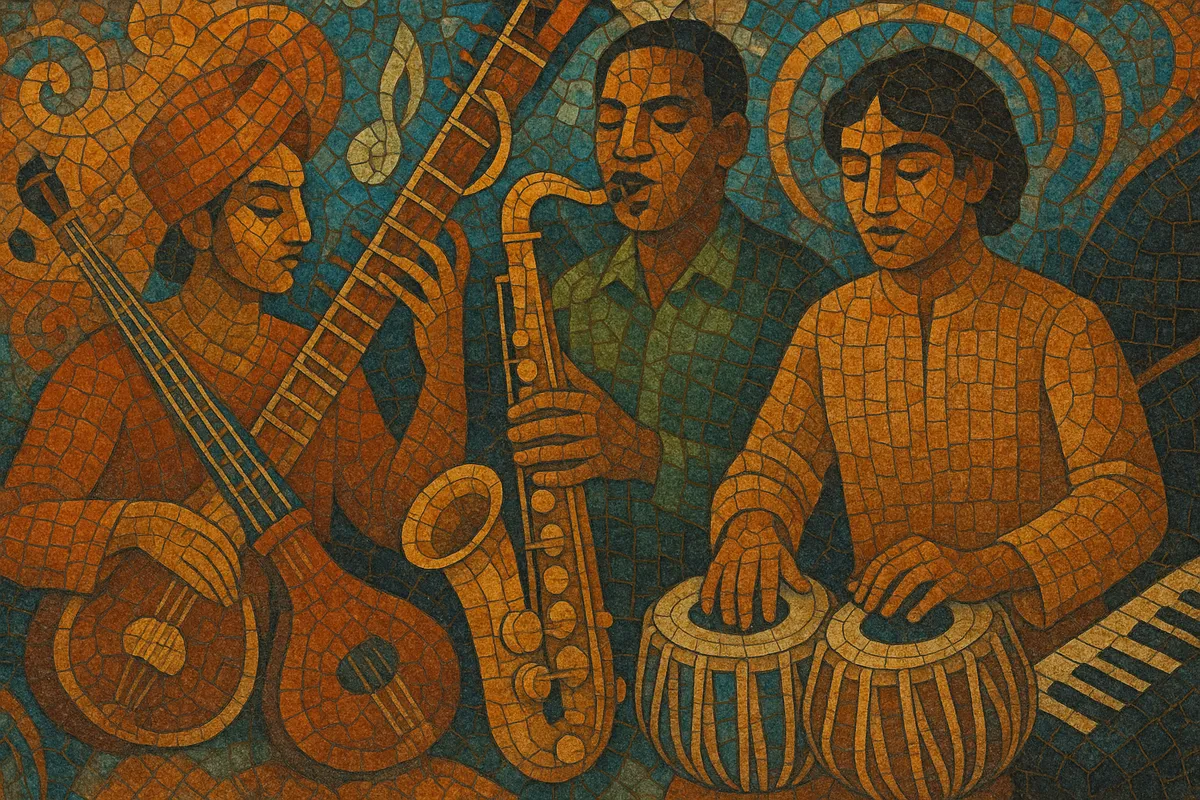Indo jazz is a cross-cultural fusion that blends the melodic and rhythmic frameworks of Indian classical music with the improvisational language, ensemble formats, and harmonic vocabulary of jazz.
Pioneered in mid-1960s London by the Indo‑Jazz Fusions projects of saxophonist Joe Harriott and composer‑violinist John Mayer, the style typically marries raga-based melodies, drone textures, and tala time cycles with jazz head–solo–head forms, modal harmony, and interactive improvisation. The palette often includes saxophone, piano, double bass, and drum set alongside tabla, sitar or violin, bansuri, and tanpura.
The result is music that can be serene and meditative yet rhythmically intricate, moving fluidly between swing and straight feels while respecting the raga’s pitch set and ornamentation (meend, gamak, and microtonal inflections).
Indo jazz emerged in mid-1960s London through the collaboration between alto saxophonist Joe Harriott and Calcutta-born composer/violinist John Mayer. Their ensemble, often billed as Indo‑Jazz Fusions, released groundbreaking albums (from 1966 onward) that systematically combined raga structures and tala cycles with jazz ensemble writing and improvisation. This was one of the first sustained, co-led projects to treat Indian classical concepts and jazz as equal partners rather than adding surface colors.
Around the same time, Indian classical luminaries and film composers explored jazz idioms. Ravi Shankar recorded with jazz musicians, and the Bollywood composer duo Shankar–Jaikishan issued the jazz-forward "Raga Jazz Style" (1968), which helped popularize Indian–jazz hybrids for broader audiences. These efforts expanded the sonic possibilities and audience for Indo‑inflected jazz beyond the concert hall.
The 1970s saw a wave of deeper integrations. John McLaughlin’s Shakti—with L. Shankar and Zakir Hussain—brought South Indian rhythmic sophistication and raga improvisation into intimate, highly virtuosic jazz contexts. Meanwhile, musicians like Collin Walcott (Oregon) placed sitar and tabla within chamber‑jazz textures, demonstrating that Indo jazz could be meditative, exploratory, and compositionally rich as well as high‑energy and improvisation‑driven.
A new generation of artists—such as Vijay Iyer, Rudresh Mahanthappa, and Trilok Gurtu—has advanced Indo jazz by internalizing Indian rhythmic cycles, pitch hierarchies, and ornamentation within modern jazz harmony, post-bop language, and contemporary ensemble writing. Today, Indo jazz informs world fusion, nu jazz, and broader jazz‑fusion aesthetics while remaining a distinct practice: respecting raga/tala integrity, embracing interactive improvisation, and fostering genuine dialogue between traditions.


